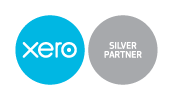There are many different forecasts you can create for your business but here we are going to focus on the 3 key forecasts your business needs to succeed and how to start creating each of them.
Sales forecast
A sales forecast is an approximation of the monthly sales expectations of your business. This is usually drawn up once a year and helps you to set targets and keep your business on track for success. This is one of the most important forecasts your business can create as it helps you manage production, staffing, finance and cash flow. It is important to note that a sales forecast is only useful for your business if it is realistic.
The easiest way to start creating your sales forecast is to look at last year’s sales, this will give you a good starting off point. The next step is to add in your assumptions for this year. How many customers do you hope to add? What do you expect your average sales price to be? Are there any changes in the market you need to be aware of? By asking yourself these questions and answering them honestly instead of optimistically you can start to craft a solid sales plan that should be reflective of what’s to come.
Cash flow forecast
A cash flow forecast is a crucial component of planning for the future of your business. It takes all of your known cash inflows and outflows in a given time period and couples them with your expected income and expenses to create a picture of how your businesses finances will look in the coming weeks, months and years.
Your cash flow forecast is an indicator of the financial health of your business and will alert you to any cash shortages or surpluses well in advance, giving you time to seek finance to bridge your cash gap or reinvest excess cash into your business for growth. You can also use your forecast to measure the effects of different decisions on your business’s cash flow through scenario planning.
There are 2 ways to create your cash flow forecast. The first of which is the indirect method, which involves using the figures from your P&L and balance sheet to derive your forecast. This is most accurate for long term planning but can be unreliable in the short term. The second way of generating a cash flow forecast is the direct method which takes all known cash inflows and outflows (and their timings) and uses them to build a forecast based on actuals, which is highly accurate in the short to medium term. This method can take hours to do manually every month due to the sheer number of transactions that need to be tallied – that’s why we built Float. Float connects to your accounting software to automatically read all of your bills and invoices (both paid and unpaid) to give you a powerful forecast at the click of a button.
Balance sheet forecast
A balance sheet forecast is an important document that lays out account balances for assets, liabilities and equity in a specified period of time (usually the end of the accounting year). Businesses use this forecast to measure working capital and assess the need for additional financing. Bank managers use this to determine a business’s likelihood to pay back a loan and trade suppliers can use this document to help decide if credit is given.
The balance sheet forecast is also referred to as the statement of financial position. To create your forecast you should start by consulting your sales forecast as your projections of other balance sheet items such as inventory, accounts receivable and accounts payable will be highly dependent on sales. From this you can then start to add in projected asset, liability and equity items, after these have been added you should include in any financing you expect to receive.
There we have it, by producing these 3 vital forecasts you can measure success, anticipate and give yourself time to prepare for any changes and plan for business growth. The most important thing to remember when creating business forecasts is to be realistic, as the more honest you are with yourself the more accurate and useful your forecasts will be.

